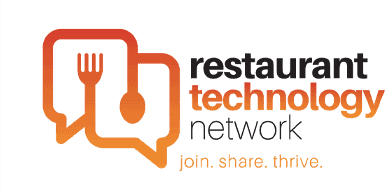A large number of states have now allowed restaurants to reopen their dining areas. But with the reopening, operators must contend with the reality of resuming operations while still observing social distancing mandates necessary to keep both their employees and customers as safe as possible. And as on-premise dining heavily relies on guest volume and close proximity, social distancing has left operators with a unique set of challenges.
At this time, many restaurant businesses in reopened states are doing a lot of improvised problem solving, while operators in currently-closed areas seek to devise new operational standards to put in place for when their time comes to return to full service.
When the dust settles, what exactly will restaurants look like in the new age of social distancing?
Here are four ways social distancing could affect how restaurants operate in the future.
Social Distancing Updates to Restaurant Interiors
Previously, the goal for restaurant operators was to accommodate as many patrons as possible. This has meant packing dining areas with tables spread just enough apart for people to be able to comfortably pass through.
However, with recommendations for individuals to now stay six feet away from each other in order to stem the spread of COVID-19, placing tons of tables in dining rooms can no longer be a thing—at least, for the time being.
To implement social distancing guidelines, operators will need to space out their dining rooms tables six feet apart and may also limit the size of parties per table. Additionally, those with spaces reserved exclusively for events might transition these areas into separate dining rooms in order to accommodate more guests while still ensuring there’s plenty of distance between tables.
Rethinking Reservation Policies
Typically designed to maximize revenue while maintaining guest comfort and service standards, restaurant reservation systems will need to evolve in this post-COVID-shutdown era. Operators will need to consider their spatial limitations more carefully than ever before.
To prevent overcrowding, while ensuring guests still have safe and enjoyable dining experiences, restaurants will publish open times and seating arrangements on their websites. Similar to the way concert-goers pick their seats when purchasing tickets online, guests will be able to choose and reserve a table on a restaurant’s website, giving operators more control over their seat capacity.
Servers Will Spend Less Time at Tables
Prior to the COVID-19 outbreak, many full-service restaurants featured a staff of servers who routinely visited their tables to take and drop off orders and enhance the guest experience. Now, for both their own safety and the safety of guests, servers will need to lessen the amount of time they spend at tables.
As a result, more and more restaurant brands will make use of technologies that allow guests to place their orders without requiring a server to be there.
OneDine’s mobile-based contactless order solution, for example, allows guests to:
- Tap their mobile device on an NFC-enabled sensor or scan a QR code at their table, launching a digital menu
- Browse the menu and easily order directly from their device
- Use filter options to display only menu items that match their personal dietary needs, tastes, and lifestyle preferences
- Mark menu items as “Favorites” to narrow down their selections
- Access in-store-only offers and promotions
- Call a server to their table if needed
Their orders are then sent to the kitchen. In addition to helping to keep both guests and servers safe by reducing the need for direct contact, OneDine’s solution makes the dining experience more efficient and frees up wait staff to focus on providing exceptional customer service.
Contactless Payment Will Become the Norm
Payment solutions that don’t require the need to exchange physical forms of currency further reduce the need for direct contact between guests and front-of-house staff members. Additionally, as it’s well documented that cash and credit cards harbor a tremendous amount of germs, contactless payment technologies, like OneDine’s PurePay™ system, also help keep guests and employees safe from the spread of viruses.
PurePay enables safe and convenient payment from a mobile device. Guests that place their orders using OneDine’s NFC-enabled table sensors or QR codes can pay for their order, split the check, and add a tip all from their own device. PurePay also enables guests to initiate payment by using their phones to scan a QR code from a receipt or from your management tablet, as well as via an SMS link sent to a guest’s mobile device that prompts them to pay via Apple Pay, Google Pay, or credit card.
Beyond making it easy and seamless for guests to pay for their orders, contactless payment solutions help keep both guests and staff safe by eliminating the exchange of germ-laden currency and reducing the need for physical contact. This technology could eventually become the new standard.
Restaurants reopening in the midst of the pandemic are entering into a whole new world of guidelines surrounding health and safety. By strategically putting methods and systems in place to accommodate social distancing and by implementing new technologies focused on making guest experiences contactless, operators can put themselves in the best possible place for success during this health crisis.





